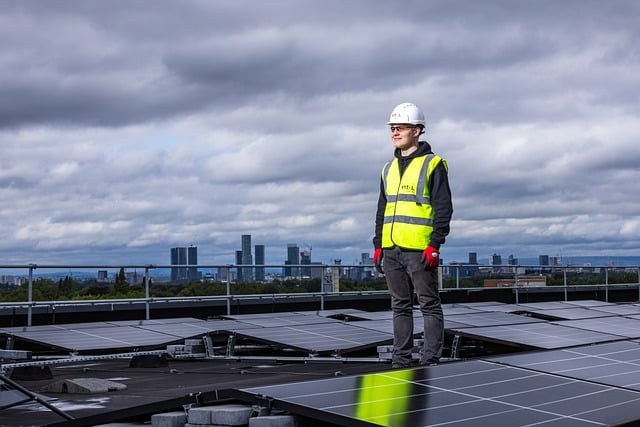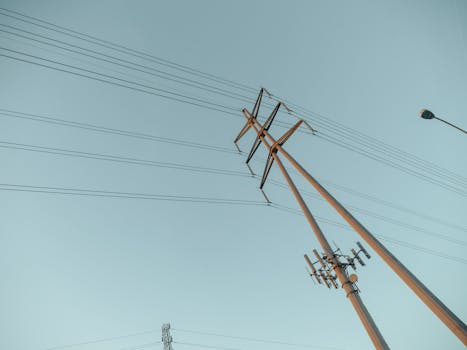“Empowering Safety: The Essential Role of Disconnect Switches in Solar Wiring.”
Disconnect switches play a crucial role in solar wiring systems by providing a safe and efficient means to isolate solar panels and inverters from the electrical grid and the rest of the system. These switches are essential for maintenance, emergency situations, and ensuring the safety of both personnel and equipment. By allowing for the quick disconnection of power, disconnect switches help prevent electrical hazards, facilitate repairs, and ensure compliance with safety regulations. Understanding their function and proper installation is vital for optimizing the performance and safety of solar energy systems.
Importance of Disconnect Switches in Solar Systems
Disconnect switches play a crucial role in the safety and efficiency of solar energy systems, serving as a vital component in the overall wiring architecture. As solar energy continues to gain traction as a sustainable power source, understanding the importance of these switches becomes increasingly essential for both installers and users. At their core, disconnect switches provide a means to safely isolate the solar panels and associated equipment from the electrical grid or battery systems, ensuring that maintenance and emergency procedures can be conducted without risk of electric shock or equipment damage.
One of the primary functions of disconnect switches is to facilitate safe maintenance. Solar energy systems, like any electrical installation, require periodic inspections and repairs. When technicians need to access the system for maintenance, disconnect switches allow them to cut off the power supply quickly and efficiently. This isolation is critical, as it protects both the personnel working on the system and the equipment itself from potential hazards. Without these switches, technicians would be exposed to live electrical currents, increasing the risk of accidents and injuries.
Moreover, disconnect switches are essential for emergency situations. In the event of a fire or other emergency, first responders need to be able to quickly and safely shut down the solar system to prevent further hazards. The presence of a clearly marked and easily accessible disconnect switch can significantly enhance the safety of emergency personnel, allowing them to focus on addressing the situation without the added concern of electrical risks. This capability not only protects lives but also minimizes damage to property, as it allows for a more controlled response to emergencies.
In addition to safety, disconnect switches contribute to the overall efficiency of solar systems. They enable users to perform system checks and troubleshooting without disrupting the entire installation. For instance, if a particular panel is underperforming, the disconnect switch allows for that panel to be isolated for testing or replacement without affecting the performance of the remaining panels. This targeted approach to maintenance can lead to improved system performance and longevity, ultimately maximizing the return on investment for solar energy users.
Furthermore, disconnect switches are often required by electrical codes and regulations, underscoring their importance in solar installations. Compliance with these codes not only ensures the safety of the system but also protects the investment made by homeowners and businesses in solar technology. By adhering to these regulations, installers can provide peace of mind to their clients, knowing that their systems are both safe and compliant with industry standards.
In conclusion, the role of disconnect switches in solar wiring cannot be overstated. They are integral to ensuring the safety of both personnel and equipment, facilitating efficient maintenance, and complying with regulatory requirements. As the adoption of solar energy continues to grow, understanding the importance of these switches will be vital for anyone involved in the installation or operation of solar systems. By prioritizing safety and efficiency through the use of disconnect switches, stakeholders can help foster a more sustainable energy future while protecting the investments made in solar technology. Ultimately, these switches are not just components of a solar system; they are essential safeguards that enhance the reliability and effectiveness of renewable energy solutions.
Types of Disconnect Switches Used in Solar Wiring

Disconnect switches play a crucial role in the safety and efficiency of solar power systems, serving as essential components that allow for the safe isolation of solar panels and inverters from the electrical grid. Understanding the various types of disconnect switches used in solar wiring is vital for both installers and users, as these devices ensure that maintenance and emergency procedures can be conducted without risk of electrical shock or damage to the system.
One of the most common types of disconnect switches found in solar installations is the AC disconnect switch. This switch is typically located between the inverter and the utility grid, allowing users to disconnect the solar system from the grid when necessary. The AC disconnect switch is particularly important during maintenance or in the event of an emergency, as it ensures that no electricity is flowing back into the grid, which could pose a danger to utility workers. Furthermore, these switches are often required by local electrical codes, emphasizing their importance in ensuring compliance and safety.
In addition to AC disconnect switches, DC disconnect switches are also integral to solar wiring. These switches are positioned between the solar panels and the inverter, allowing for the safe disconnection of the direct current generated by the solar panels. This is particularly important during maintenance, as it prevents any risk of electric shock while working on the solar array. DC disconnect switches are designed to handle high voltage and current levels, making them robust and reliable for use in solar applications. Their presence not only enhances safety but also contributes to the overall efficiency of the solar power system by allowing for quick isolation when needed.
Another type of disconnect switch that is gaining popularity in solar installations is the combination switch. This device integrates both AC and DC disconnect capabilities into a single unit, streamlining the installation process and reducing the amount of space required for electrical components. Combination switches are particularly advantageous in residential solar systems, where space can be limited. By consolidating the functions of both AC and DC disconnects, these switches simplify the wiring process and enhance the overall aesthetic of the installation.
Moreover, it is essential to consider the manual versus automatic disconnect switches. Manual disconnect switches require users to physically operate the switch to disconnect the system, which can be beneficial for ensuring that the system is intentionally isolated. On the other hand, automatic disconnect switches can be triggered by specific conditions, such as a fault in the system or a grid outage. These automatic systems enhance safety by ensuring that the solar installation is disconnected without requiring user intervention, thus providing an additional layer of protection.
As solar technology continues to evolve, so too do the designs and functionalities of disconnect switches. Innovations in materials and engineering have led to the development of more efficient and reliable switches that can withstand the rigors of outdoor environments. Additionally, advancements in smart technology are paving the way for disconnect switches that can be monitored and controlled remotely, offering users greater flexibility and control over their solar systems.
In conclusion, understanding the various types of disconnect switches used in solar wiring is essential for ensuring the safety and efficiency of solar power systems. From AC and DC disconnects to combination switches and the choice between manual and automatic options, each type serves a specific purpose that contributes to the overall functionality of the solar installation. As the solar industry continues to grow, staying informed about these components will empower users and installers alike to make informed decisions that enhance both safety and performance.
Safety Benefits of Disconnect Switches in Solar Installations
Disconnect switches play a crucial role in the safety and efficiency of solar installations, serving as a vital component in the overall wiring system. These switches are designed to isolate the solar panels and associated electrical components from the grid or battery systems, providing a means to safely disconnect the system during maintenance or emergencies. Understanding the safety benefits of disconnect switches is essential for anyone involved in solar energy, whether they are homeowners, installers, or maintenance personnel.
One of the primary safety benefits of disconnect switches is their ability to prevent electrical shock. Solar panels generate direct current (DC) electricity, which can be hazardous if not handled properly. When maintenance is required, or if an emergency arises, disconnect switches allow technicians to safely isolate the solar array from the electrical system. This isolation is critical, as it ensures that no live electricity is present in the wiring, significantly reducing the risk of electrical shock. By providing a clear and accessible means to disconnect the system, these switches enhance the safety of all personnel involved.
Moreover, disconnect switches contribute to fire safety in solar installations. In the event of a malfunction or fault within the system, such as a short circuit, the potential for overheating and fire increases. By enabling a quick disconnection of the solar panels from the electrical system, these switches can help mitigate the risk of fire. This is particularly important in residential settings, where the presence of flammable materials can exacerbate the situation. The ability to swiftly cut off power can prevent small issues from escalating into catastrophic events, thereby protecting both property and lives.
In addition to their role in preventing electrical hazards and fires, disconnect switches also facilitate compliance with safety regulations and codes. Many jurisdictions require the installation of disconnect switches as part of their electrical codes for solar energy systems. By adhering to these regulations, installers not only ensure the safety of the system but also protect themselves from potential legal liabilities. Compliance with safety standards is paramount in the solar industry, and disconnect switches are a key element in meeting these requirements.
Furthermore, disconnect switches enhance the overall reliability of solar installations. In the event of a severe weather event, such as a storm or lightning strike, disconnect switches allow for the immediate disconnection of the solar system, protecting it from potential damage. This proactive approach to safety ensures that the system remains operational and minimizes the risk of costly repairs. By incorporating disconnect switches into the design of solar installations, owners can enjoy peace of mind knowing that they have taken steps to safeguard their investment.
In conclusion, the safety benefits of disconnect switches in solar installations cannot be overstated. They provide essential protection against electrical shock, reduce the risk of fire, ensure compliance with safety regulations, and enhance the reliability of the system. As the adoption of solar energy continues to grow, understanding the importance of these switches becomes increasingly vital. By prioritizing safety through the use of disconnect switches, stakeholders in the solar industry can contribute to a safer and more efficient energy future. Ultimately, the integration of these devices not only protects individuals and property but also fosters greater confidence in the use of renewable energy sources.
Best Practices for Installing Disconnect Switches in Solar Projects
When it comes to solar energy systems, the installation of disconnect switches is a critical component that ensures both safety and functionality. Disconnect switches serve as a vital link in the electrical circuit, allowing users to isolate the solar panels from the rest of the system for maintenance, troubleshooting, or emergency situations. To maximize the effectiveness of these switches, adhering to best practices during installation is essential.
First and foremost, selecting the appropriate type of disconnect switch is crucial. There are various types available, including AC and DC disconnects, each designed for specific applications within solar systems. AC disconnects are typically used for systems connected to the grid, while DC disconnects are essential for isolating the solar panels from the inverter. Understanding the specific requirements of your solar installation will guide you in choosing the right switch, ensuring it can handle the voltage and current levels present in your system.
Once the appropriate switch has been selected, the next step involves determining the optimal location for installation. Disconnect switches should be easily accessible to users, allowing for quick operation in case of an emergency. Ideally, they should be installed within sight of the solar array and inverter, facilitating immediate access without the need to navigate through obstacles. Additionally, it is important to consider environmental factors such as exposure to moisture, dust, and extreme temperatures, as these can affect the performance and longevity of the switch. Therefore, installing the switch in a sheltered location or using weatherproof enclosures can significantly enhance its durability.
Moreover, proper mounting of the disconnect switch is essential for ensuring its reliability. The switch should be securely fastened to a stable surface, using appropriate hardware that can withstand environmental stresses. It is also advisable to follow the manufacturer’s guidelines regarding installation height and orientation, as these specifications are designed to optimize the switch’s performance and safety. Furthermore, ensuring that the switch is mounted vertically can help prevent water accumulation, which could lead to electrical failures.
In addition to physical installation, attention must be paid to the wiring connections associated with the disconnect switch. All connections should be made using high-quality, appropriately rated conductors to minimize resistance and heat generation. It is also vital to follow local electrical codes and standards, as these regulations are designed to ensure safety and reliability in electrical installations. Proper labeling of wires and connections can further enhance safety, making it easier for technicians to identify circuits during maintenance or troubleshooting.
Finally, regular maintenance and testing of the disconnect switch are essential practices that should not be overlooked. Periodic inspections can help identify any signs of wear, corrosion, or damage that may compromise the switch’s functionality. Additionally, testing the operation of the switch ensures that it functions correctly when needed. Keeping a maintenance log can also be beneficial, providing a record of inspections and any issues encountered over time.
In conclusion, the installation of disconnect switches in solar projects is a fundamental aspect that requires careful consideration and adherence to best practices. By selecting the right type of switch, ensuring proper placement and mounting, making secure wiring connections, and committing to regular maintenance, solar system installers can enhance the safety and efficiency of their installations. Ultimately, these practices not only protect the integrity of the solar system but also contribute to the overall reliability and longevity of renewable energy solutions.
Q&A
1. **What is the primary function of a disconnect switch in solar wiring?**
The primary function of a disconnect switch in solar wiring is to safely isolate the solar power system from the electrical grid or the load for maintenance, repairs, or emergencies.
2. **Where should disconnect switches be installed in a solar power system?**
Disconnect switches should be installed between the solar panels and the inverter, as well as between the inverter and the electrical panel, to allow for safe disconnection at multiple points.
3. **What are the safety benefits of using disconnect switches in solar systems?**
Disconnect switches enhance safety by allowing users to quickly and easily cut off power flow, reducing the risk of electric shock during maintenance or in case of a fault.
4. **Are there different types of disconnect switches used in solar applications?**
Yes, there are several types of disconnect switches used in solar applications, including manual switches, automatic switches, and circuit breakers, each serving specific operational and safety needs.
Conclusion
Disconnect switches are crucial in solar wiring as they provide a safe means to isolate solar panels and inverters from the electrical system for maintenance or emergency situations. They enhance safety by allowing for the quick disconnection of power, preventing electrical hazards. Additionally, they facilitate compliance with electrical codes and regulations, ensuring that solar installations are both safe and efficient. Overall, understanding the role of disconnect switches is essential for the safe operation and maintenance of solar energy systems.




